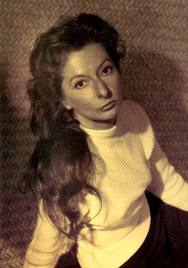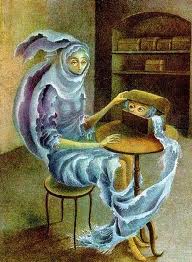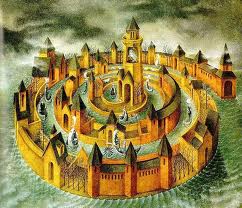Symbolism: Remedios Varo
Remedios Varo, whose full name was María de los Remedios Alicia Rodriga Varo y Uranga, was a Mexican-Spanish painter who was particularly remembered for her contribution to the artistic movements of Surrealism and Symbolism. Her work is still famous today, particularly in Mexico and the USA.
Remedios Varo (1908-1963)

Remedios Varo was born in the town of Anglès in Girona, she showed great artistic skill as well as a keen interest in painting from a young age. In 1917, the family decided to move to Madrid. Here, encouraged by her father, Remedios Varo began studying in Madrid at the Academy of Fine Arts of San Fernando at the age of fifteen. Here she worked alongside other great Spanish painters such as Salvador Dalí.
At the end of her studies, Varo got married to one of her classmates, Gerardo Lizárraga. The pair then left to live in Paris for a year. When she returned in 1932, Remedios Varo moved to live in Barcelona which is where she first came into contact with the vanguard artists. Varo also began working in partnership with her husband as an adverts and publicity artist.
However in 1935, Remedios Varo separated from her first husband. Afterwards, she made the acquaintance of a painter named Esteban Francés who introduced her to André Breton and his group of Surrealist friends.
Once she had fully immersed herself in the Surrealist movement, she left to join the group known as 'Logicofobista', whose aim was to represent the mental state of the internal soul in a Surrealist style. During her time spent as a member of this group, Remedios Varo produced her painting 'L´Agent Double' (Double Agent), a painting that would display the famous style that she would continue to develop later on.

With the dawn of the Spanish Civil War, Remedios Varo decided to support the Republican side. Her opposition to the Fascists led her to meet her future second husband, the French poet Benjamin Péret. After they married, the couple fled to Paris in France in 1937. While in Paris, the pair lived and breathed Surrealism. In 1938, Remedios Varo displayed her piece, 'Il est tard' (He is late), at the International Surrealism Exposition.
However when the Nazis invaded France, Varo and her husband left Europe in 1941 and headed to Mexico in South America. Remedios thought that Mexico would only be a place to stay while she was in exile from Occupied France, however she would come to spend nearly all her remaining life there.
Varo separated from her second husband in 1947, who then returned to Paris, as it was now a liberated country. Varo, thanks to her many contacts in Latin America, left for Venezuela where she remained until 1949, continuing to work as an advert artist. After this, Remedios Varo returned to Mexico where she met the Austrian politician Walter Gruen, with whom she would spend the rest of her life. He helped convince Varo to give up drawing for businesses, and to dedicate herself instead to painting.

In 1955, Varo presented some of her work at a collective exhibition at the Diana Gallery in Mexico, and in 1956, she held her own individual exhibition. During her time in Mexico, Varo also met other famous native Mexican artists such as Frida Kahlo and Diego Rivera. Mexico would also be the place where she would die from a heart attack in 1963.
Remedios Varo's work was extremely varied. However, by 1949, Remedios Varo had discovered her mature style of painting. She often used oil paints on masonite panels, however she also employed very fine, over-lapping brushstrokes to great effect. Her paintings also tended to contain a lot of personal memories from her childhood. Furthermore, although her work was highly mystical, she often used scientific iconography in her paintings.
Some of Remedios Varo's most famous works include 'La Revelación o el Relojero' (The Revelation or the Watchmaker), 'Exploration of the Source of the Orinoco River', and 'Vampiros Vegetarianos' (Vegetarian Vampires).
